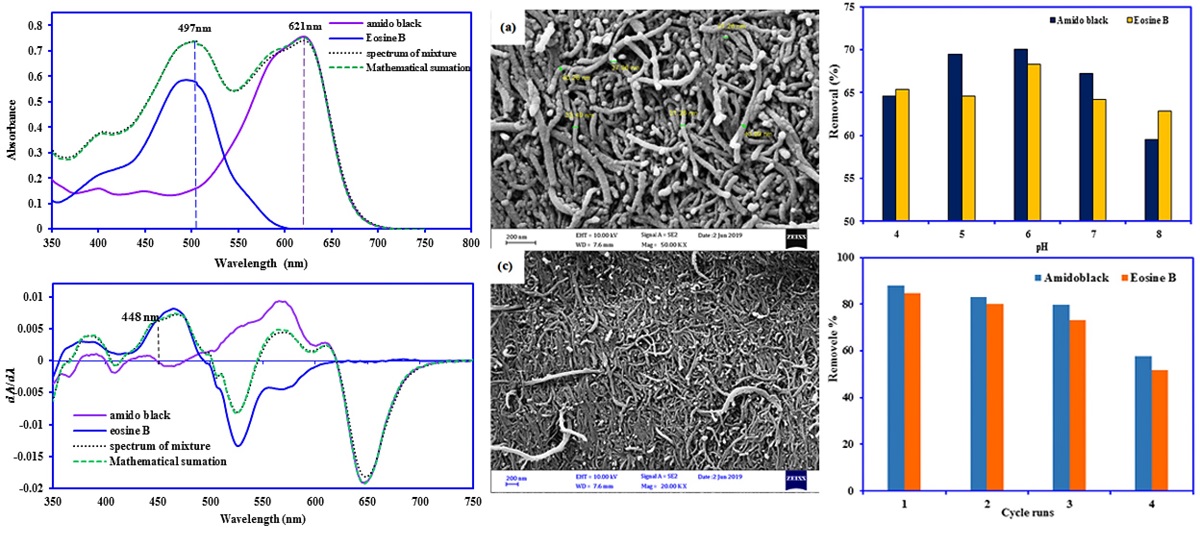This research illustrates modification of multi-walled carbon nanotubes (MWCNT) by ZrO2/Pb to construct nanocomposites (MWCNT/ZrO2/Pb-NCs) by simple precipitation technique and subsequently examine its ability for adsorption of Amido black (AB) and Eosin B (EB) dyes in binary system. The present nanocomposites investigation by FESEM, XRD, FTIR, and EDX analysis, reveal its as-synthesized crystalline nature with cubic morphology and average particle size 30–50 nm. The present nano-adsorbent represent high efficiency for AB and EB adsorption from aqueous solution, while dependency of variables including pH, initial concentration of dyes, contact time and MWCNT/ZrO2/Pb-NCs mass were analyzed by central composite design (CCD). The predicted maximum removal percentage was 95% removal for both dyes is consequence of adjustment of operational conditions at pH of 6.0; 0.05 g MWCNT/ZrO2/Pb-NCs; 15 min stirring at 15 mg L-1 for both dyes. The Langmuir as applicable for representation and description of reveal data of adsorption with adsorption capacity of 15.46 and 16.92 mg g-1 for AB and EB, respectively. Pseudo-first order model owing to its high correlation coefficient and closeness of experimental and theoretical data well represented behavior of corresponding adsorption system. Mechanism examination strongly proof high contribution of external mass transference as the main rate-controlling step. The successful regeneration of MWCNT/ZrO2/Pb-NCs suggested their usefulness in wastewater treatment and its ability of environmental management.

